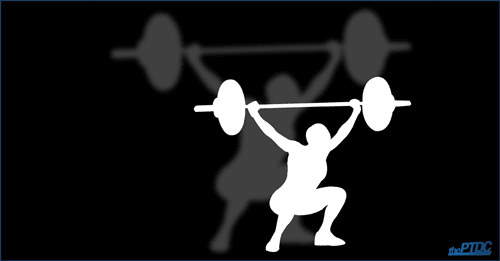Training an athletic client presents a unique and challenging situation. The optimal program would not only be based on the needs of the athlete's sport but also their current state of strength and skill. Therefore, the trainer needs to examine the needs to the sport as well as the needs of the athlete.
*Note: to cover an entire year of training dealing with in season and preseason considerations would be lengthy. Consider this article and its application for the off-season as this is generally the time when the athlete focuses on weight training anyway.

Needs of the sport: Practical recommendations
If you're working with an athlete and are curious about what their sport demands, I highly recommend going to their games. I always make it a point to go to as many games as possible not only to show my athletes I care but to also observe what it takes to be successful at the sport. Things to look for include:
- Does the athlete work against an external load (football) or do they need to be strong and with their body weight (gymnastics)?
- Is it a linear sport (sprinting) or is it a linear and lateral sport (most sports are)
- Is it an endurance sport (track), sprint dominated sport (softball, baseball), or is it a mix (basketball, lacrosse)
- Does the sport need rotational power? (golf, baseball, softball)
- What is the most common injury in the sport? (knees, ankles, low back, shoulder)
Once you've answered these questions you can start to see which exercises might be extremely beneficial. For example, sprinters and football players who both need explosive strength would benefit from explosive exercises like the hang clean.
We can further break down strength into several categories including absolute strength, explosive strength (power), and reactive strength, which is the ability to produce force quickly and is characterized by a rapid eccentric movement before the concentric muscle action.
Athletes such as powerlifters are probably the only athletes concerned with absolute strength. While strength is hugely important for many athletes, explosive strength and the rate of force development is probably much more important.
Testing Athletes
Once you understand what your athlete needs to succeed in their sport testing is the next logical step. I recommend checking out Strength and power profiling of athletes: Selecting test and how to use the information for program design by McGuigan, Cormack, and Gill in the Strength and Conditioning Journal for any coach working with athletes. Here are some test you may use for absolute strength, explosive strength and reactive strength:
- Absolute strength test: Bench press, deadlift, squat
- Explosive strength/power test with external load: Power clean, hang clean, medicine ball chest pass (for distance)
- Explosive strength/power with body weight: countermovement vertical jump, single leg jumps
- Reactive strength: drop jumps
What to do with the data? Considerations for the individual
Once again, McGuigan and colleagues provide some great insights on what to do with the testing data you have collected.
- Compare reactive strength (drop jump) to explosive strength (countermovement box jump). If there is a large difference favoring the countermovement box jump than more maximal strength or reactive strength drills might be necessary for this athlete.
- Compare single leg jumps to countermovement jumps. If the sum of the two individual leg jumps is much higher than the height for the countermovement box jump the coach should incorporate more bilateral exercises. You can also compare the strength and power of each leg to see if there are any large discrepancies.
Another thing to consider is the difference between absolute strength test and explosive strength test. Consider this, you have two athletes -- athlete A squats 350 pounds and athlete B squats 165 pounds. Both have identical vertical jump heights and happen to be identical in everything other than their squatting abilities.
Athlete A would likely benefit from more explosive training whereas athlete B would likely benefit from more strength training. Since power is generated from strength, athlete B is likely working at a maximal power capability for the strength they have.
Based on the data, the coach can then begin to put together a program. This program could be broken down into training cycles that focus on specific goals.
For example, one six-week training block may focus on absolute strength followed by a four-week training block focusing on explosive strength. Another option would be to alternate the training goal on a weekly basis. One week may focus on power and the other on strength. The coach may decide to work on an athlete's specific weakness or build upon their strengths. Once you have the data you need there are a multitude of ways to put together a successful program for an athletic client and their needs.











